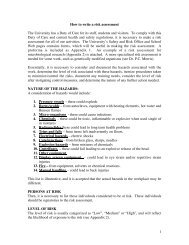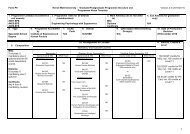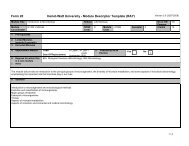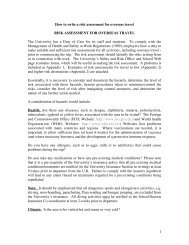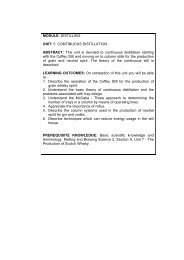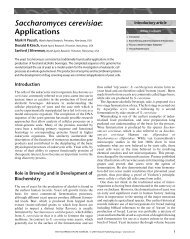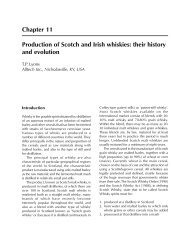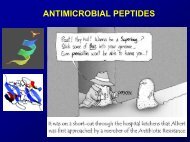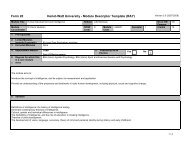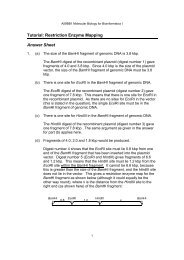SAFETY BOOKLET - School of Life Sciences - Heriot-Watt University
SAFETY BOOKLET - School of Life Sciences - Heriot-Watt University
SAFETY BOOKLET - School of Life Sciences - Heriot-Watt University
You also want an ePaper? Increase the reach of your titles
YUMPU automatically turns print PDFs into web optimized ePapers that Google loves.
18CONTAINMENT LEVEL 3The <strong>School</strong> Safety Officer MUST be consulted before contemplating any work with Hazard Group 3organisms (e.g. Salmonella typhi).GUIDELINES FOR THE HANDLING OF HUMAN BODY FLUIDS AND TISSUES FROMAPPARENTLY HEALTHY SUBJECTSBody fluids, even from apparently healthy individuals, can be contaminated with infectious agents, suchas Hepatitis B or the Human Immunodeficiency Virus. People regularly involved with the handling <strong>of</strong>human material should seek a Hepatitis B vaccination and maintain a sufficient titre (via booster doses).The following good laboratory practice and procedures should be observed and be sufficient to avoidinfection:1) Saliva, blood (and serum/plasma) and tissue should be handled within a clean, designated area.2) The storage <strong>of</strong> experimental and biological material must always be segregated from any food ordrink for human consumption.3) Impermeable gloves (e.g. Powder free – Latex) must be worn when handling human materialand any open cuts or lesions present on the operator must be covered with a waterpro<strong>of</strong>dressing. Once used, gloves should be disposed <strong>of</strong> into an incineration bag (see point 4).4) Use only disposable plastic syringes, pipette tips and tubes and dispose <strong>of</strong> immediately after useinto a plastic bag (Yellow) marked ‘FOR INCINERATION’.5) All sharps* must be placed into a ‘Sharps bin’ and disposed <strong>of</strong> by incineration when 2/3 full.Needles can be removed from syringes using the notch on the sharps box, or by using forceps.Needle and syringe can be disposed <strong>of</strong> intact into the box.6) Do not re-sheath needles.7) Clean any saliva, blood (and serum/plasma) or tissue spillages immediately with 1% sodiumhypochlorite solution and dispose <strong>of</strong> wipes into incineration bag.8) Non-disposable equipment (e.g. glassware/powdering implements) must be completelyimmersed in 0.1% hypochlorite solution (1 in 10 diluted ‘Milton’) overnight before reprocessingfor re-use.9) Any injury involving a potentially contaminated sharp must be washed immediately, encouragedto bleed (do not suck) and reported both to the experimental supervisor and health centre assoon as possible. An accident form must be completed.10) If a subject oozes blood following a finger prick or venepuncture, apply a waterpro<strong>of</strong> dressingand have the subject exert digit pressure through it on the site.11) Ensure all samples are correctly labelled and stored at the appropriate temperature.12) Contamination <strong>of</strong> the eyes or mouth should be treated by immediate irrigation with copiousamounts <strong>of</strong> water and saline. Disposable face masks should be worn when powdering musclesamples.13) Wash hands after any procedure involving human samples, and immediately if the skin becomescontaminated with splashes <strong>of</strong> fluid.*Sharps include needles, cannulae, giving sets, scalpels, razor blades, stitch cutters, broken ampoulesand glass.19/08/02






